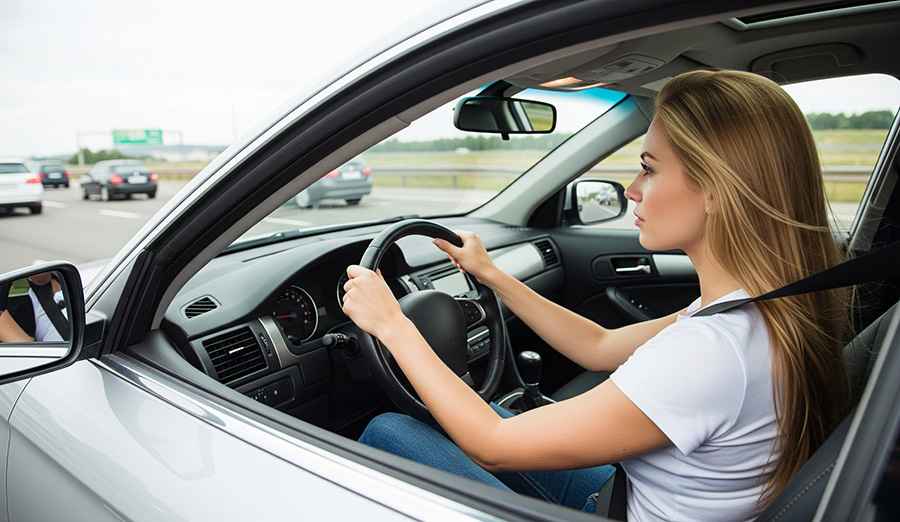Defensive Driving Tips to Avoid Lane Change Crashes
Changing lanes is something drivers do countless times each day, but it's also one of the leading causes of accidents on busy roads and highways. Lane change crashes often happen in an instant, leaving drivers injured, cars damaged, and insurance premiums skyrocketing.

Are you wondering why these accidents happen so frequently? It's usually a combination of poor timing, inadequate checking, and drivers making assumptions about what others will do.
The good news is that many of these collisions are preventable with defensive driving strategies. We'll explore practical tips for avoiding lane change crashes, how to anticipate other drivers' moves, and the small habits that can keep you safer every time you hit the road.
Always Check Your Blind Spots Like Your Life Depends on It
Blind spots are notorious troublemakers when it comes to lane change accidents. Every vehicle has them, and they're bigger than most drivers realize. Before moving into another lane, always check your mirrors and turn your head to glance over your shoulder. Yes, it takes an extra second, but that second can save you from a collision.
Modern vehicles may have blind spot monitoring systems, but don't rely on them completely. They're helpful tools, not replacements for careful observation. These systems can malfunction, miss smaller vehicles like motorcycles, or fail to detect cars approaching quickly from behind. Taking that extra moment to physically look can help you avoid sideswipes or more serious collisions that could have been easily prevented.
Signal Early and Give Everyone Fair Warning
Your turn signal is your communication tool on the road, and defensive drivers know how to use it effectively. Always signal well before changing lanes, giving other drivers time to adjust their speed or position. Think of it as a courtesy that also protects you.
Avoid sudden, last-minute moves that catch other drivers off guard. Even if traffic is heavy and you're running late, patience is absolutely key. A clearly signaled lane change that's executed smoothly reduces surprises and lowers the risk of accidents caused by sudden maneuvers. Other drivers can't read your mind, so your signal light is the only way they know what you're planning to do.
Maintain Safe Following Distance in All Directions
Crowding other vehicles leaves little room for safe lane changes. Defensive drivers keep a safe following distance, not just behind their own car but in the lane they plan to enter. Are you one of those drivers who squeezes into tiny gaps? That's a recipe for disaster.
A good rule is the "three-second rule": pick a fixed point ahead and ensure at least three seconds pass between when the car ahead passes it and when you do. More space means more time to react if someone suddenly moves into your lane or if traffic conditions change rapidly. This buffer zone gives you options and escape routes when things go wrong.
Read the Road and Anticipate What Others Will Do
Defensive driving isn't only about your actions, it's also about reading the road around you like a detective. Watch for clues that another driver might change lanes: drifting toward the lane line, flicking on a turn signal, frequent head checks, or even subtle changes in their speed.
Expect that drivers might cut in without signaling or misjudge gaps completely. Some drivers are unpredictable, distracted, or simply inexperienced. By staying alert and keeping an escape route open, you're better prepared to avoid sudden lane change hazards. Think of it as playing chess instead of checkers, always considering what might happen next.
Keep Your Cool and Drive Smoothly
Speeding, weaving through traffic, or aggressively trying to squeeze into small gaps are recipes for lane change crashes. Defensive drivers adjust their speed to match traffic flow and resist the urge to "force" a lane change when conditions aren't right.
If you miss your exit or turn, keep calm and safely circle back rather than making risky moves across multiple lanes. Road rage and aggressive driving turn routine lane changes into dangerous situations. Keeping your emotions in check and driving smoothly can dramatically lower your accident risk. Remember, that aggressive driver weaving through traffic might save a few minutes, but they're also significantly more likely to end up in a crash.
Small Habits That Make a Big Difference
Beyond the major strategies, small habits can significantly improve your lane change safety. Check your mirrors regularly, not just when you're planning to change lanes. Keep your vehicle properly maintained so your signals work correctly and your mirrors are clean. Position yourself in traffic where you have the most options and room to maneuver safely.
Consider the weather and road conditions too. Rain, snow, or even bright sunlight can affect visibility and stopping distances, making lane changes more dangerous. Adjust your technique accordingly, allowing more space and time when conditions aren't ideal.
Your Safety is Worth the Extra Second
Lane change crashes can happen in seconds, but defensive driving habits can keep you out of harm's way. By checking blind spots thoroughly, signaling clearly, maintaining safe distances, anticipating other drivers' behavior, and avoiding aggressive moves, you'll dramatically reduce your chances of a collision.
Remember, staying safe on the road isn't just about reaching your destination quickly, it's about getting there safely. Next time you're behind the wheel, practice these defensive driving tips and help keep yourself and everyone else on the road protected.